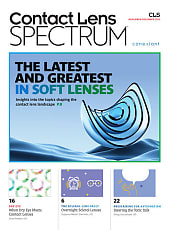
On April 2, President Trump signed an executive order implementing new reciprocal tariffs on all U.S. imports. The tariffs take effect in phases, starting with a 10% baseline rate on April 5, with higher country-specific rates for certain nations beginning April 9.
The Vision Council (TVC) recently issued a Q+A to provide an overview of how the tariffs will impact the optical industry.
The following are some key takeaways:
- A 10% “reciprocal” tariff applies to all imports starting April 5 in addition to any regular tariff or other special tariff currently effective on the product.
- Taking effect April 9, country-specific tariffs will graduate from the 10% rate to the following higher rates:
- China, 34%
- EU, 20%
- Vietnam, 46%
- Taiwan, 32%
- Japan, 24%
- India, 26%
- South Korea, 25%
- Thailand, 36%
- Switzerland, 31%
- Indonesia, 32%
- Malaysia, 24%
- Cambodia, 49%
- Goods in transit before the tariff deadlines are exempt.
- Tariffs apply in addition to existing duties, except for certain Section 232 steel, aluminum, and auto tariffs.
- Imports from Canada and Mexico remain duty-free under the United States-Mexico-Canada Free Trade Agreement if they qualify under its rules.
- Goods with 20% or more U.S.-origin content are partially exempt.
- Foreign Trade Zone and drawback policies remain unchanged for now.
- De minimis exemption ($800 or less shipments) remains for most countries but ends for Chinese goods on May 2.
- The Executive Order allows for further tariff increases if trade imbalances persist or foreign countries retaliate.
TVC shares it will provide further updates as the situation evolves, but members can stay up to date at TVC's tariff dashboard.



